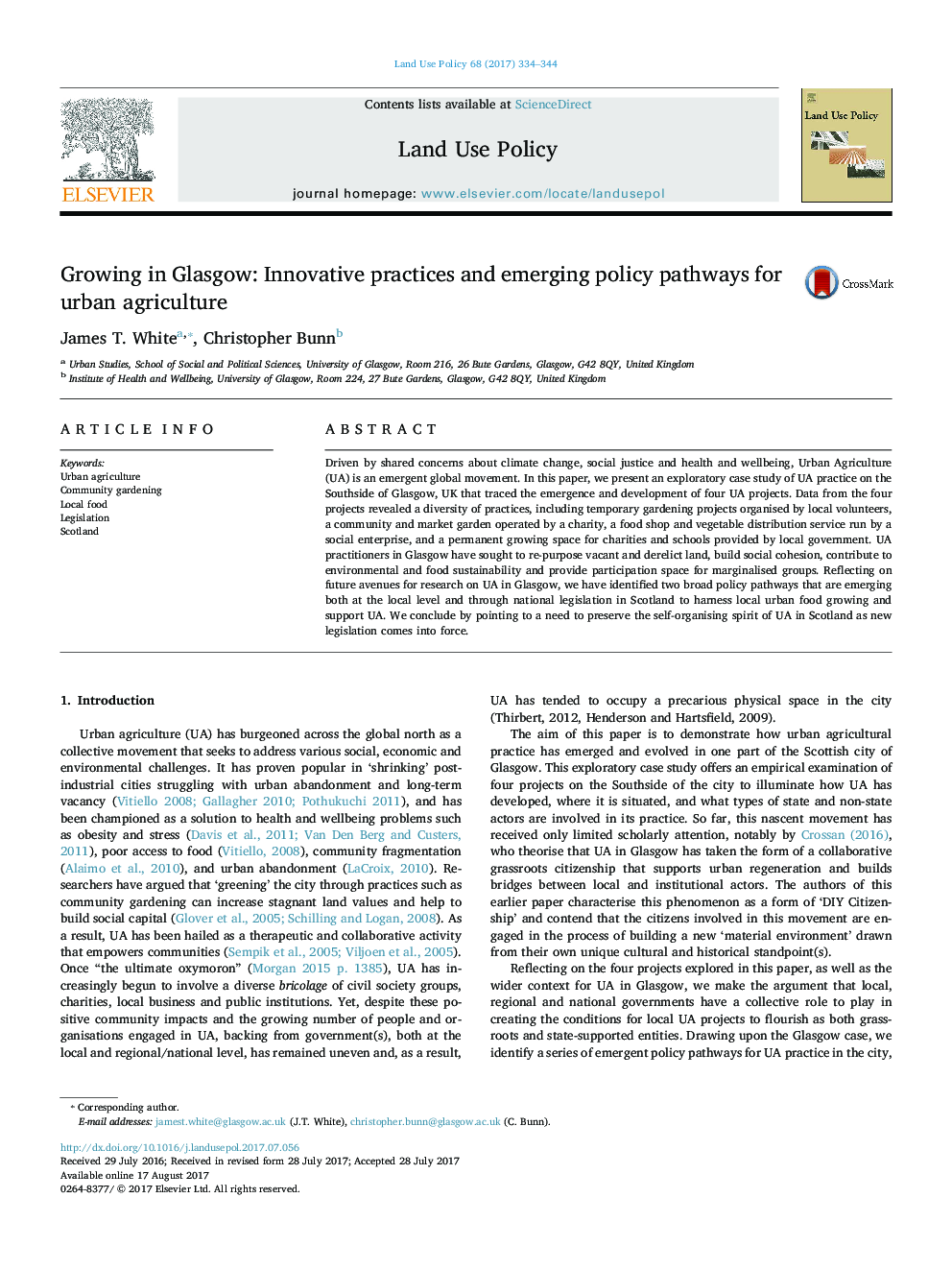| کد مقاله | کد نشریه | سال انتشار | مقاله انگلیسی | نسخه تمام متن |
|---|---|---|---|---|
| 6460548 | 1421815 | 2017 | 11 صفحه PDF | دانلود رایگان |
- Paper explores four projects in Glasgow, Scotland that reveal a diversity of UA practices.
- Negotiating access to land and securing long-term funding are common challenges for local UA practitioners.
- UA practitioners in Glasgow seek to re-purpose vacant and derelict land, build social cohesion and contribute to environmental and food sustainability.
- National governments have an important role to play in supporting community groups and local authorities to create optimal conditions for UA.
- Paper identifies two pathways for UA in Scotland: partnerships between activists and local government, and enabling national legislation.
Driven by shared concerns about climate change, social justice and health and wellbeing, Urban Agriculture (UA) is an emergent global movement. In this paper, we present an exploratory case study of UA practice on the Southside of Glasgow, UK that traced the emergence and development of four UA projects. Data from the four projects revealed a diversity of practices, including temporary gardening projects organised by local volunteers, a community and market garden operated by a charity, a food shop and vegetable distribution service run by a social enterprise, and a permanent growing space for charities and schools provided by local government. UA practitioners in Glasgow have sought to re-purpose vacant and derelict land, build social cohesion, contribute to environmental and food sustainability and provide participation space for marginalised groups. Reflecting on future avenues for research on UA in Glasgow, we have identified two broad policy pathways that are emerging both at the local level and through national legislation in Scotland to harness local urban food growing and support UA. We conclude by pointing to a need to preserve the self-organising spirit of UA in Scotland as new legislation comes into force.
Journal: Land Use Policy - Volume 68, November 2017, Pages 334-344
